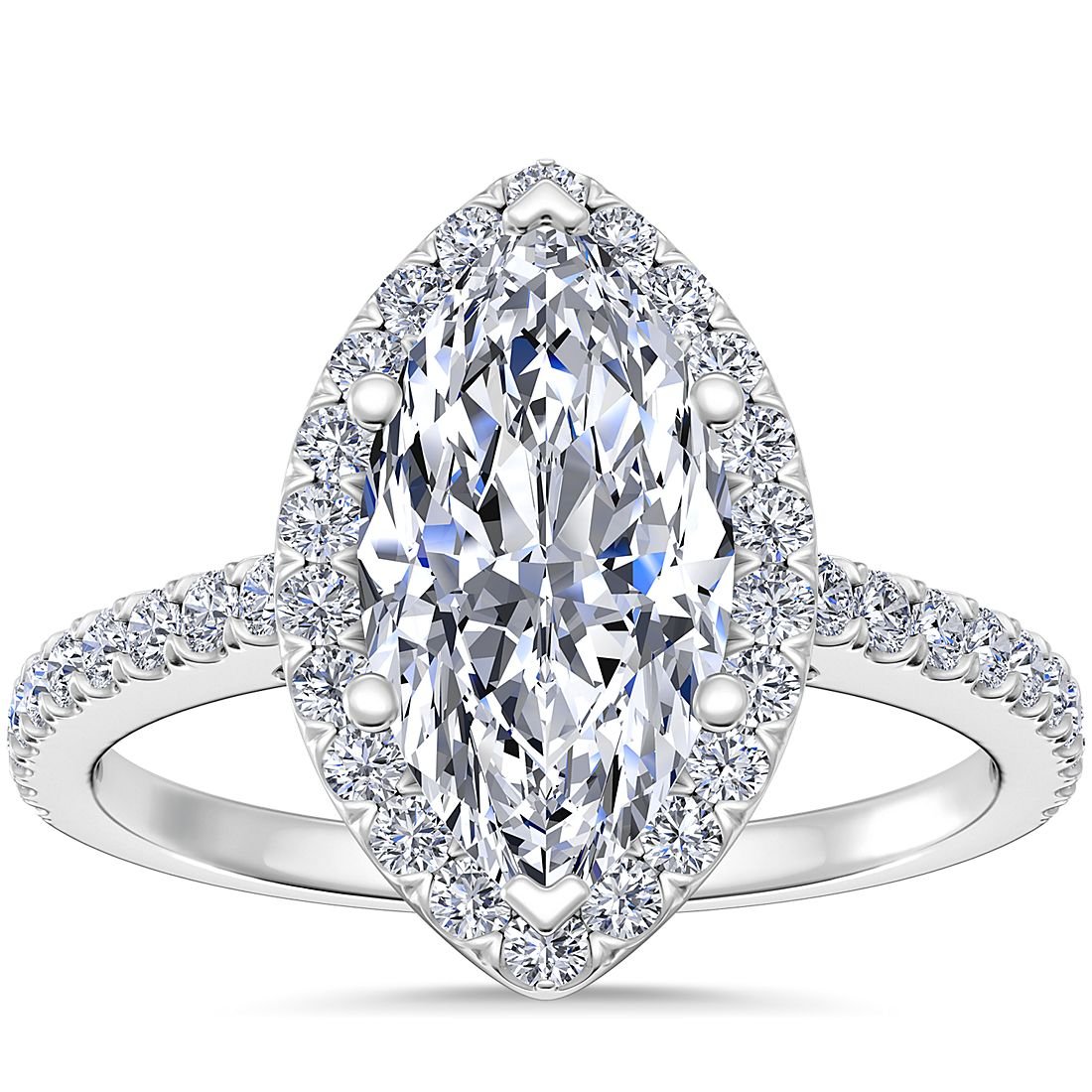Marquise Diamond History
Marquise diamond, Image courtesy of Quality Diamonds
Article Content
Origins of Marquise Diamond
Mystique of Marquise Diamond
Evolution of Marquise DiamondSignificance of Marquise Diamond
Choosing the Perfect Marquise Diamond
Caring for Your Marquise Diamond
Future of Marquise Diamond
Lab-grown Marquise Diamonds
Conclusion
FAQs
The Origins of Marquise Diamond
King Louis XV of France and the Marquise de Pompadour, Image Courtesy of Marie Antouinette’s
The Marquise diamond is believed to have been first commissioned by King Louis XV of France in the 18th century. The story goes that the king requested a diamond that resembled the shape of the lips of his mistress, the Marquise de Pompadour. The diamond cutters created a new shape that was long and pointed on both ends, and thus the Marquise diamond was born.
The name "Marquise" is derived from the French word "marquis," which means nobleman or aristocrat.
The Mystique of Marquise Diamond
Queen Victoria, Image Courtesy of News Week
The Marquise diamond has long been associated with mystery and intrigue, thanks in part to its connection with King Louis XV and his mistress. In addition, the Marquise diamond has been featured in numerous works of art and literature, adding to its mystique and allure.
The Marquise diamond has been worn by many famous women throughout history, including Queen Victoria, who wore a Marquise diamond and emerald brooch to the wedding of her daughter, Princess Victoria, in 1858. More recently, celebrities such as Catherine Zeta-Jones, Victoria Beckham, and Ashlee Simpson have been spotted wearing Marquise diamond engagement rings.
Image Courtesy of Mozeris Fine Antiques
The Evolution of Marquise Diamond
The Marquise diamond quickly became a popular choice among royalty and the wealthy elite due to its unique and elegant shape. However, it wasn't until the 20th century that the Marquise diamond gained widespread popularity. In the 1970s, the cut was refined by diamond cutters to enhance its brilliance, fire, and sparkle. Today, the Marquise diamond is a popular choice for engagement rings, wedding bands, and other high-end jewelry.
Depending on the inclinations of various periods, the Marquise cut has witnessed a number of modifications over time. In the 20th century, 58 additional facets were added to the Marquise cut to enhance its brilliance and brightness.
Two pointed extremities and an elongated shape with a convex profile on the sides characterise this design.
Marquise cut diamond engagement ring, Image Courtesy of Blue Nile
The Significance of Marquise Diamond
The Marquise diamond is a shape that symbolizes love, luxury, and elegance. It is a classic choice for engagement rings, and its elongated shape makes the finger appear longer and slimmer. The Marquise diamond is also known for its excellent brilliance and fire, making it a captivating choice for jewelry that demands attention.
The Marquise diamond's unique shape is also believed to have spiritual significance. Some people believe that the diamond's elongated shape represents the soul's journey through life, with the pointed ends symbolizing the beginning and end of life's journey. Others believe that the diamond's shape is reminiscent of a compass or an arrow, representing a sense of direction and purpose.
How to Choose the Perfect Marquise Diamond
Marquise diamond ratio variations, Image Courtesy of Do Amore
When choosing a Marquise diamond, there are several factors to consider. The cut quality is the most important aspect, as it affects the diamond's overall appearance and value. Look for a diamond with a high cut grade, excellent symmetry, and polish. It is also important to choose a diamond with a good color grade, as the elongated shape can make any yellow tint more noticeable. Finally, consider the size and carat weight of the diamond, as this will affect its overall cost.
Another important factor to consider is the diamond's length to width ratio, which is the proportion of the diamond's length to its width. The ideal length to width ratio for a Marquise diamond is between 1.75 and 2.25, with a ratio of 2.0 being considered the most balanced and symmetrical.
Caring for Your Marquise Diamond
Image Courtesy of Life Storage
It's crucial to take proper care of your Marquise diamond if you want to keep it looking beautiful and brilliant. Avoid exposing it to harsh chemicals or extreme temperatures, and always store it separately from other jewellery to prevent scratches. Regular cleaning and maintenance by a professional jeweller can also help to keep your Marquise diamond looking its best.
It is also important to take precautions when wearing your Marquise diamond, as the pointed ends can be prone to chipping or breaking. Avoid wearing your diamond during activities that could cause it to be knocked or bumped, such as sports or manual labour.
The Future of Marquise Diamond
The Marquise diamond has stood the test of time and remains a popular choice for high-end jewelry today. As technology advances, we may see new innovations in diamond cutting that further enhance the brilliance and fire of the Marquise diamond. However, one thing is certain: the Marquise diamond will always be a timeless and elegant choice for those who appreciate its unique beauty.
In recent years, lab-grown Marquise diamonds have become more popular due to their affordability and ethical considerations. These diamonds are created in a laboratory using advanced technology that replicates the conditions needed to create a natural diamond. They are virtually identical to natural diamonds in terms of their chemical composition and physical properties, but they are significantly more affordable.
Image Courtesy of Mozeris Fine Antiques
Conclusion
The Marquise diamond has a long and fascinating history that is steeped in royalty, elegance, and luxury. Its unique shape has captivated people for centuries, and it continues to be a popular choice for high-end jewelry today. Whether you choose a natural or lab-grown Marquise diamond, you can be sure that you are investing in a timeless and beautiful piece of jewelry that will be cherished for generations to come.
FAQs
What is a Marquise diamond? A Marquise diamond is a diamond cut in an elongated shape with pointed ends, resembling the shape of a boat.
Who popularized the Marquise diamond? The Marquise diamond was popularized in the 18th century by King Louis XV of France, who commissioned a diamond in the shape of his mistress's lips.
What is the ideal length to width ratio for a Marquise diamond? The ideal length to width ratio for a Marquise diamond is between 1.75 and 2.25, with a ratio of 2.0 being considered the most balanced and symmetrical.
Can Marquise diamonds chip or break easily? The pointed ends of Marquise diamonds can be prone to chipping or breaking if not worn with care. It is important to avoid wearing your diamond during activities that could cause it to be knocked or bumped.
What is a lab-grown Marquise diamond? A lab-grown Marquise diamond is a diamond that is created in a laboratory using advanced technology that replicates the conditions needed to create a natural diamond. These diamonds are virtually identical to natural diamonds but are more affordable and ethical.









